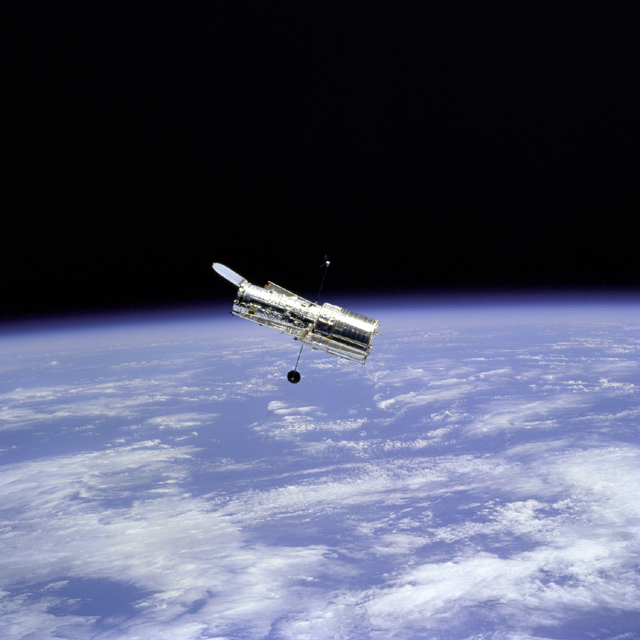Hubble Space
Telescope

Hubble Space Telescope
Credits - NASA
The Hubble Space Telescope (HST), named after American astronomer Edwin
P. Hubble, is the most sophisticated telescope ever orbited. It has contributed
more to changing our understanding of the Universe than any other scientific
instrument. HST is a joint project of the National Aeronautics and Space
Administration (NASA) and the European Space Agency (ESA) and operates for the
benefit of scientists worldwide.
Every day, Hubble archives 3 to 5 gigabytes of data and delivers between 10 and
15 gigabytes to astronomers all over the world. The Space Telescope
Science Institute (STScI) in Baltimore, Maryland, is responsible for conducting
and coordinating the science operations of telescope.
The idea for such an observatory first surfaced in the
1940s; it was authorized by the U.S. Congress in 1977, and designed and built
in the 1970s and 1980s. Launched on
April 25, 1990, from the Space Shuttle Discovery, it orbits 375 miles
(600 kilometers) above Earth.. Its science instruments include three
cameras, two spectrographs, and fine guidance sensors. Its primary mirror has a
diameter of 94.5 inches
(240 centimeters). The telescope is able to produce high-resolution
images of astronomical objects of great clarity, brightness, and detail because
it is located above the Earth's atmosphere, which limits and distorts
observations made by ground-based telescopes with comparable optics.
The telescope was
designed for long-term use, made possible by regular servicing missions that
repair or replace worn out or malfunctioning parts and upgrade equipment to the
latest state of the art. It is the first scientific mission of any kind
designed for routine servicing by spacewalking astronauts. Its modular
design allows the astronauts to take it apart, replace worn out equipment, and
upgrade instruments. Each time a science instrument in Hubble is replaced, it
increases Hubble scientific power by a factor of 10 or greater.
Although it was
discovered soon after launch that the primary mirror on the telescope had been
manufactured with a spherical aberration, resulting in fuzzy images, the first servicing mission in December
1993 corrected the condition and it has returned top-quality images ever since.
As of March 2002, there have been four visits to the telescope.



